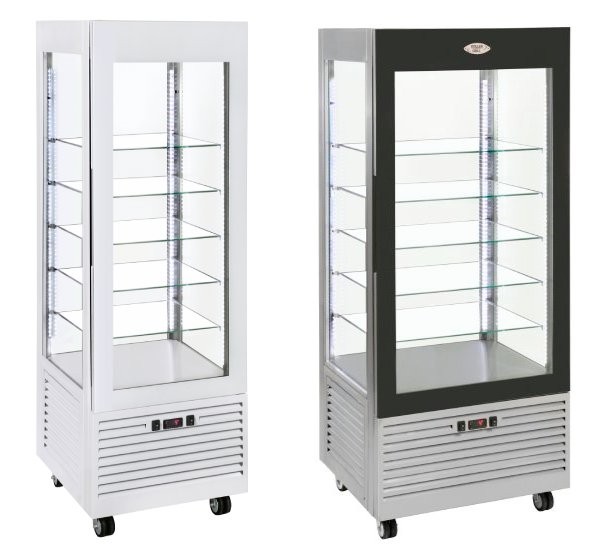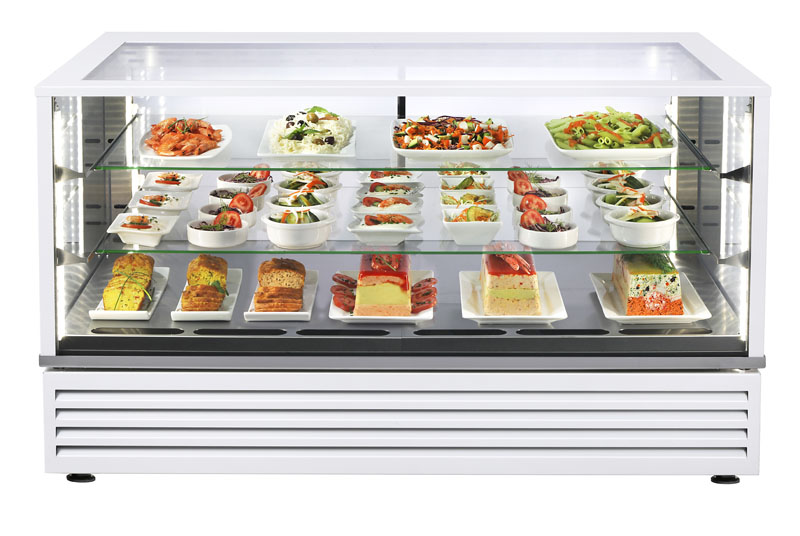Running a restaurant, cafe, bar, canteen, food stand, or other food establishment comes with costs. Not only do you have to source and invest in catering equipment, but you also have to ensure that the equipment you choose is energy efficient so that your electricity bills are not excessive.
Whether it is a refrigerated display showcase or a professional electric crepe maker, the energy use of catering appliances depends on their design, usage and maintenance. For example, commercial display refrigerators work particularly hard during the summer months. Always in use and with glass doors being opened and closed frequently, a commercial display refrigerator has to work much harder than an ordinary domestic fridge.
Considering the requirements for commercial display refrigerators to perform efficiently and the high cost of energy, it is essential to take action to avoid excessive energy consumption.
Refrigerator manufacturers play their part by designing refrigeration systems with durable components, using high-quality materials, and introducing high-tech control systems to reduce energy consumption, including LED lighting and better insulation. However, while considerable advances have been made and continue to be made in the manufacturing process, the user must also take measures to optimise energy efficiency.

How to ensure optimum energy efficiency?
Clean the refrigerator regularly
Cleaning your display refrigerator or our display showcase is necessary not only to meet environmental health and safety standards but also to reduce the unit's electricity consumption. In addition, cleaning your refrigerated display regularly keeps it looking as good as new and will extend its lifespan.
After cleaning the exterior and interior surfaces, you should also clean the vents, filter and condenser to remove any dust and debris. Vacuum the coils and condenser to remove any accumulation of dirt that can clog up the air intake and cause the motor to work harder. Clean and check the door seals for damage to prevent cold air from escaping.
Position it correctly
How you position your display refrigerator will affect how much electricity it uses. For example, if your regrigerated cabinet is in a hot location, such as a busy kitchen, it will use more energy than if you position it in a colder place. An increase in room temperature of 1°C causes an increase in electricity consumption of around 6 %. Therefore, it is advisable to find a cool place for your refrigerated display cabinets and showcases.
If cold storage is essential in a busy commercial kitchen, select a model with a climate class of 4 or over. This classification means the unit has been tested to work effectively in ambient temperatures up to 30°C.
Your refrigerated unit should also be easily accessible. You can then reach stock quickly, and the door will be open for shorter periods.

Ensure your commercial display refrigerator is being used correctly
Your refrigerated display case can only work as well as you use it, so you should make sure everyone understands how to use it correctly.
Follow the manufacturer's manual to set the correct temperature for optimal efficiency. The ideal temperature will vary depending on your products, but don't set it too high or too low, as this will waste energy.
To reduce electricity consumption, minimise the time the door is open. Opening the door and removing or placing a container inside can account for almost a quarter of total energy consumption. However, this is not easy to avoid in a busy setting such as a bakery or shop. In this case, an open refrigerated display may be more cost-effective.
Refrigerated displays and showcases are designed to hold foods at cold temperatures. If you place hot items inside, the display must work much harder to cool the temperature.

Maintain the airflow
Check that air can flow freely around the unit. Do not place other equipment around or on top of the display refrigerator or in a position that will block the airflow.
Your refrigerated display should be positioned in a well-ventilated place with at least a 5cm gap all around it. This air gap will reduce the risk of humidity, which also increases the workload of your fridge while opening and closing the door.
Check that the display is not too full of products. Overfilling prevents cold air from circulating within the cabinet and increases electricity consumption, as the motor would have to work harder to maintain a low temperature.
Service and maintain commercial display refrigerators regularly
While you can carry out regular cleaning in-house, it is essential to have your refrigeration equipment serviced by a qualified engineer annually. However, simple maintenance tasks such as replacing door seals can be performed by employees. Replacing any worn parts as necessary will also help to ensure your refrigeration runs smoothly and maximise the return on your investment.
